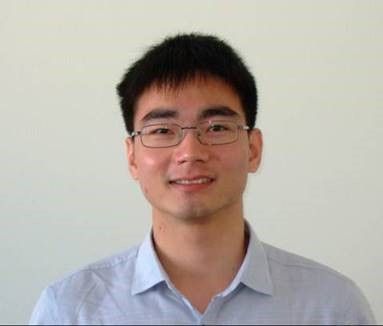Trends and Developments in Liquid Chromatography
A snapshot of key trends and developments in liquid chromatography/liquid chromatography–mass spectrometry (LC/LC–MS) according to selected panellists from the chromatography sector.
Q. What trends do you see emerging in LC or LC–MS?
Runsheng Zheng: Recent years have showed the increased demand for the separation and analysis of diverse and complex samples in virus research, vaccines development, large‑scale translational research studies, precision medicine, and analysis of single cells. This significantly extended the use of different types of liquid chromatography (LC) and columns. The anion exchange, cation exchange, supermacroporous, micro-pillar array, and hydrophilic interaction liquid chromatography (HILIC) columns are serving the need for efficient separation of oligonucleotides, intact proteins, peptides, glycans, and lipids. In addition, the focus on uncommon and complex analytes has accelerated the adoption of mass spectrometry (MS) in quality control, such as with multi-attribute method (MAM) for biotherapeutics. Charged aerosol detection (CAD) became a hit in quality control of vaccine excipients. Ultralow nano-flow coupled with high‑resolution accurate mass (HRAM) mass spectrometers opened the door for single-cell proteomics that was not even possible a few years ago. Standardized micro‑flow LC–MS workflows are combining high sensitivity with high robustness for rapid profiling of biological liquids, ready for the analysis of thousands of samples.
Gesa Schad: Apart from the general desire for miniaturization, flexibility, and faster results, combined with the need for simplification and automation, the trend goes towards more user-friendly data handling solutions. That combined with smart instrument features that support preventative maintenance, reduce system downtime and offer ease-of-use for non-experts make the technique more accessible to less experienced scientists, so that anyone is able to produce meaningful, reliable data, without excessive training needs. The possibility of working remotely, being able to control the instrument and access data from anywhere, also became an urgent requirement with the changes the pandemic brought to the work environment. And with an increased environmental awareness and rising cost of energy, of course manufacturers have to consider sustainability and more eco‑friendly solutions in all aspects of any new developments.
Ronan O’Malley: LC–MS means different things to different people—for researchers, it is a means of testing a hypothesis; for a pharmaceutical manufacturer it can be a tool to test a product attribute; and for a clinician, a “closed” diagnostic system.
More and more we see these customer segments demanding product offerings that are more targeted to their individual needs. For a research scientist schooled in LC–MS and comfortable with system complexity, demands might include interchangeable ionization sources, precise control over means and modes of fragmentation, great flexibility in software options, and fast turnaround of software enhancements. For them, technical innovation remains at the top of the list.
A laboratory manager at a pharmaceutical company or contract development and manufacturing organization (CDMO) prioritizes serviceability, total cost of ownership, reliability, and integration into existing good laboratory practices (GxP) compliant workflows more highly.
In one of the biggest potential markets, clinical diagnostics, the requirements are for systems to be “fault tolerant” and to provide reproducible results and consumer‑electronics‑levels of usability. Pulling back on the focus a bit, as an instrument manufacturer we see that all customer segments demand secure interoperability with their own data systems. Staying with the software theme for the moment, changes in analysts’ expectations with respect to working remotely gives vendors the opportunity to differentiate their product offerings by adding and improving options for remote use, which is among the reasons for transitioning to cloud‑based informatics.
Rohit Shroff: Industrial sustainability agendas are increasingly a driving force behind decision-making for new products and new methods. Goals to reduce solvent consumption have increased interest in reduced column internal diameters to increase efficiency and encouraged development of methods using shorter column lengths to reduce run times per sample. In addition, reversed‑phase chromatography’s heavy reliance on acetonitrile and methanol mobile phases means new approaches to mobile phases have moved up the agenda. As a result, there is a renewed interest in greener technologies such as supercritical fluid chromatography (SFC), whilst research into alternative solutions, such as purely aqueous mobile phases running at elevated temperatures, provides a glimpse as to how LC methods may be adapted in the future.
Additionally, domains such as proteomics and metabolomics have focused on the development of methods for very complex sample analysis. This high-resolution, “fingerprint”-type approach to sample identification is now generating more interest from industries such as food analysis, where product integrity and authenticity testing are increasingly adopting LC–MS for these types of investigations.
Q. What is the future of LC or LC–MS?
Runsheng Zheng: Liquid chromatography should become a multi-tool that can resolve almost any analytical challenge, from small molecules analysis to the separation of large proteins and protein complexes detected by advanced MS and UV–vis technologies. The deployment of artificial intelligence/machine learning (AI/ML) and building interconnected laboratory infrastructure with automation of all sample handling steps will make LC and LC–MS even more robust, predictable, and easier to use. The LC cycle times will shrink to several minutes so the technique will enable large-scale pharmaceutical and medical research projects, which have thousands of samples required for reliable statistical analysis.
Gesa Schad: The increased desire for an automated workflow, from sample registration and pre-treatment to analysis, data processing, and reporting, will drive the development in the future. This is not only due to the lack or the cost of qualified personnel but also owing to the requirement of data integrity and complete control of the entire process, in an effort to eliminate the risk of human error at every step of the way.
Ronan O’Malley: A foundational criterion for many grant-awarding bodies is sustainability—not just in energy usage but in recyclability of components as well as environmental costs incurred in all aspects of use—from packaging materials and delivery overhead to minimizing the use of solvents and other consumables. Others, along with industry, will very soon follow suit in specifying these as non-negotiable purchasing criteria.
Beyond near-term challenges, the LC–MS user of the future—interested only in the answers to questions such as: “What is this substance?” and “How much of it do I have?”—will benefit from advances in UX research and engineering and, more importantly, systems designed for precisely defined purposes, to the extent that one day, perhaps, they may be completely unaware that their device uses LC–MS at all.
Rohit Shroff: There is an increasing need for field-based analysis across a variety of industries, meaning that miniaturization of technology has been a trend for a number of years. Improved usability and reduced cost of MS technology is supporting the development and interest in chromatography in this area and placing them in new settings that offer opportunities for improving real-time monitoring. This is also driving innovation in column technology as manufacturers look at alternatives to the classic column format, with designs being influenced by the growing field of microfluidics, where the manufacturing methods result in more reproducible technology compared to traditional formats based on silica beads packed into columns.
Q. What is the LC or LC–MS application area that you see growing the fastest?
Runsheng Zheng: With LC and LC–MS becoming more efficient, sensitive, and reliable for the analysis of complex biological samples, the areas of translational research and precision medicine show the fastest growth. The promise to change our daily lives with early disease detection, efficient treatment, and real-time patient recovery monitoring is driving investment and advanced LC and LC–MS hardware and software. Another area that has been a hot topic for several years is automated and in‑depth quality control of biotherapeutics. There is a fast adoption of MAM workflows in the regulated environment by large biopharma companies.
Gesa Schad: For some time now there has been a shift in focus of pharmaceutical companies towards novel biologic medicines—which got an additional boost in the race for a COVID-19 vaccine and the emergence of novel mRNA technology for this purpose. Therefore, in recent years we have seen an increasing demand for system solutions for analysis and/or purification of biopharmaceuticals, such as intact proteins, oligonucleotides, antibody–drug conjugates, or monoclonal antibodies.
Ronan O’Malley: As LC–MS continues its drive towards ubiquity, applications—from monitoring levels of environmental pollutants, such as PFAS or food safety testing—will continue to proliferate. The past couple of years have, for obvious reasons, seen an acceleration in the adoption of systems for biopharmaceutical research, development, and manufacture; however, the greatest unmatched challenge remains efficient characterization of the interactome and its impact on human health and well-being.
Rohit Shroff: Emerging contaminants is an application area of growing importance to pharmaceutical, environmental, and food analysis as the understanding of the biological toxicity and lifetimes of certain contaminants increases. Increasing consumer awareness because of the media attention that some of these substances attract has also applied an increasing level of visibility in this area as well.
Recent examples include nitrosamines, which has led to mass recalls of certain pharmaceuticals, and perfluoro alkyl substances (PFAS), which has led to the evolution of regulations around these compounds. In order to support scientists in these evolving situations, manufacturers have looked to provide application-specific solutions where practical.
In clinical contexts, drugs of abuse are an ever-evolving area and scientists are adapting their methods for identification of new drugs and treatment purposes. To optimize testing efficiency, end users are looking more and more to high-throughput solutions from column manufacturers.
Q. What obstacles stand in the way of LC or LC–MS development?
Runsheng Zheng: There are three key requirements to LC and LC–MS instrumentation that don’t change over time: robustness, performance, and ease of use. On top of this, there are application requirements that combine high-throughput and high sensitivity. After several years of neglecting the importance of chromatography, we see a growing interest towards more efficient stationary phases and unique chromatographic selectivities that are needed in many research areas like proteomics, metabolomics, and lipidomics, as well as routine quality control in food and pharma. LC improvements are focusing on precise injections, faster cycle times, advanced carryover removal, and flow range versatility to accommodate diverse workflows. The crucial factor is removing the barrier for setting up, operating, and maintaining the “state‑of‑the‑art” LC–MS platform, therefore a lot of work has been done in the direction of making reliable, leak‑free connections and LC electrospray ionization (ESI)-MS integration.
Gesa Schad: In my opinion, the biggest obstacle in the way of innovation and the implementation of new developments is the fear of change and the reluctancy to change the status quo. Manufacturers work relentlessly in trying to build the “ideal” solution and overcome customers’ challenges with new and advanced equipment; however, the road from new development to established technique and eventually routine-use is long and winding. If you just look at the move from high performance liquid chromatography (HPLC) to ultrahigh-pressure liquid chromatography (UHPLC)—which meant not only a change of equipment, but education of the users, method development or transfer, method validation, and the cost associated with it—to this day, UHPLC has not been adapted in many areas where it could be a game changer. And if a new technique doesn’t take off right away or shows some “teething problems”, it may never get a second chance, as it requires confidence in a product to make that investment.
Ronan O’Malley: LC–MS as a technique is amenable to the same opportunities, and subject to the same constraints, as other sophisticated analytical instrumentation—or indeed any other complex manufactured system. As such, periodic shortages in the global supply of noble gases, specialty electronic components, and raw materials may drive innovation in engineering and production in unexpected ways. Provided these challenges can be overcome, and Moore’s law holds, advances in electronics will see time‑of‑flight mass spectrometers (free of the charge capacity limitations of ion trapping devices) re-emerge as the technology of choice for the analysis of the most complex biological samples. For the more routine applications, we will see the MS technology hidden from view and providing data behind the scenes in the same way we now accept routine video calls on handheld devices or facial/fingerprint recognition to activate smartphones.
Rohit Shroff: In biopharmaceutical production, there remains a discrepancy between the technologies often used in research and method development laboratories compared to those used for quality control (QC) purposes. Currently, the technology used in the early stages is often more advanced than for the latter stage, as regulation and the associated costs of equipment upgrades reduce the impetus to move in this direction. This means the vast number of chromatography users do not necessarily have the experience with more advanced techniques, resulting in much of the technology available often being too advanced for the experience level of the standard user, similar to many fast-paced industries. To solve this, more accessible options are being developed by manufacturers, offering “black-box” solutions so that technology makes it simpler for users to transition across. Encouragingly, we also see that chromatographic awareness is still growing at the grass roots level and its advantages are being applied to a growing number of application areas where previously other analytical techniques dominated.
Q. What was the biggest accomplishment or news in 2021/2022 for LC or LC–MS?
Runsheng Zheng: A low-flow analysis covering nano-, capillary-, and micro-flow LC–MS applications became mainstream in 2021. It moved from instrumental research and development laboratories to start-ups and core facilities, where advanced analytical services are delivered for drug discoveries and clinical research. This significant leap forward became possible due to the standardization of LC–MS applications, particularly in proteomics, and improved reliability of LC hardware. Low‑flow LC–MS was brought beyond discovery, enabling experts and novice users to get high‑quality, biologically meaningful results
every time.
Gesa Schad: I personally welcome the trend to a more “environmentally friendly” industry and the efforts I can see going towards that objective. Manufacturers adopt the United Nations Development Programme (UNDPs) Sustainable Development Goals, reducing their carbon footprint and saving energy and the impact on the environment in all stages of development and production. Eco‑labels are now a means for customers to identify environmentally-conscious companies and hopefully make a difference in the purchase decision.
Ronan O’Malley: Technologies such as ion mobility spectrometry (IMS) (a rapid gas-phase orthogonal separation) offer structural insights into large biomolecules as well as providing an additional dimension of separation to help spectral decongestion of complex samples. This improves specificity and selectivity and, as such, contributes to significant improvements in analytical peak capacity. It is the common denominator for comparing the analytical horsepower of LC–MS systems and we’ve seen a number of companies incorporate IMS into commercially available systems to enhance peak capacity. Couple that with an effort to push the power of time‑of‑flight detection, one can envision a near future where high resolution and mass accuracy MS coupled to bio-inert LC will change the game in the analyses of complex biomolecular systems.
As we see advances in new treatment modalities and a wider acceptance of genetic therapies, new technologies such as charge‑detection mass spectrometry will play a role in the characterization of these new medications.
Rohit Shroff: Over the last few years, the development of mRNA-based vaccines and their mass production in relation to COVID-19 has been an effective demonstration of the need for chromatography at all stages of the development process, including R&D, assays of the raw materials, and characterization of the final products. This has led to increased focus on the use of analytical chromatography as part of the Process Analytical Technology (PAT) systems within the biopharmaceutical and pharmaceutical industries, which has long been dominated by spectroscopic techniques such as Fourier‑transform infrared (FT-IR), raman, and UV as the diagnostic tools for online and in-line analysis.
Runsheng Zheng is a Product Specialist in the Chromatography and Mass Spectrometry Group at Thermo Fisher Scientific.

Gesa Johanna Schad is the Product Manager for the HPLC Product Line at Shimadzu Europa GmbH.

Ronan O’Malley is Senior Director, High-Resolution MS Product Management at Waters Corporation.

Rohit Shroff is SeniorVice President of Portfolio Strategy for Global Lab Products at Avantor.


Common Challenges in Nitrosamine Analysis: An LCGC International Peer Exchange
April 15th 2025A recent roundtable discussion featuring Aloka Srinivasan of Raaha, Mayank Bhanti of the United States Pharmacopeia (USP), and Amber Burch of Purisys discussed the challenges surrounding nitrosamine analysis in pharmaceuticals.
Silvia Radenkovic on Building Connections in the Scientific Community
April 11th 2025In the second part of our conversation with Silvia Radenkovic, she shares insights into her involvement in scientific organizations and offers advice for young scientists looking to engage more in scientific organizations.

.png&w=3840&q=75)

.png&w=3840&q=75)



.png&w=3840&q=75)



.png&w=3840&q=75)














